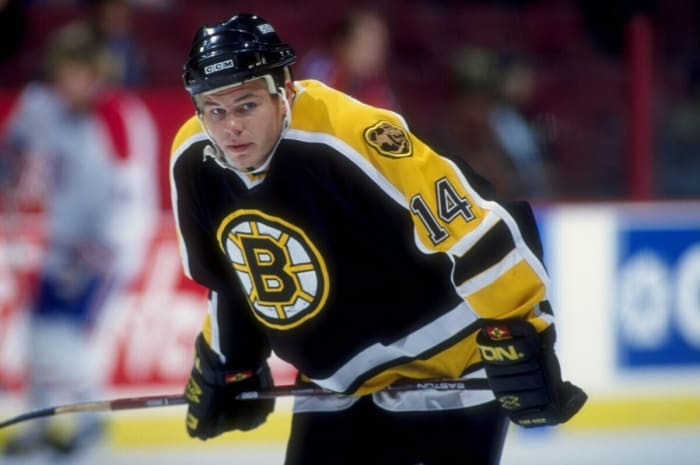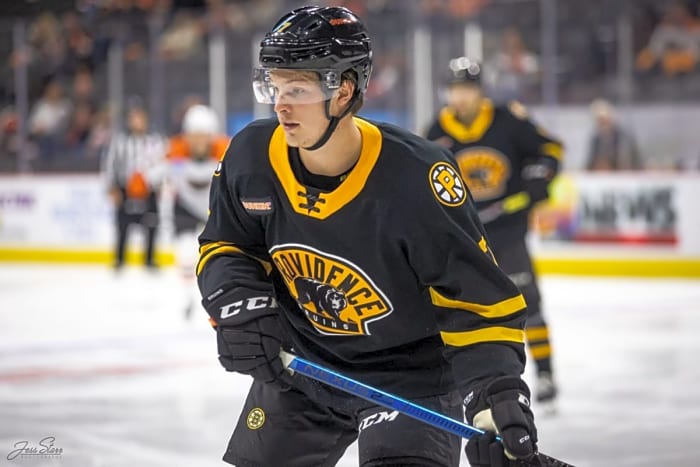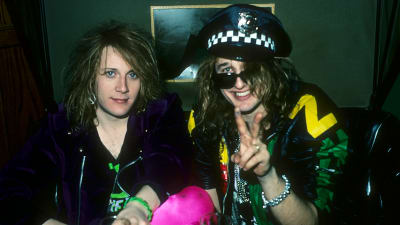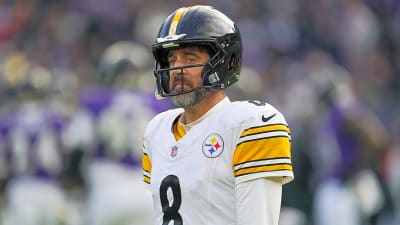
Cam Neely is one of the most influential people in the Boston Bruins’ decision-making process today. However, it wasn’t so long ago that he was a member of the Vancouver Canucks. Neely’s path to his current position and the impact it has had across the NHL. The fact that he’s now one of the leading voices in the Bruins organization shows how much the league changed on a random Friday 40 years ago. How did Neely’s move from Vancouver to Boston affect the league? Re-visiting the Neely trade is one thing, but the trade tree shows just how much the Bruins got from this deal.
Neely’s Youth Career
Beginning in the Western Hockey League (WHL), Neely immediately began to torment the league. In 72 games with the Portland Winterhawks, the Comox, British Columbia native, scored 56 goals and 64 assists for 120 points. That caught the attention of the Canucks, who drafted Neely ninth overall in the 1983 NHL Draft. They were excited to acquire a goal scorer who could help them win the first championship in Canucks history. He was supposed to be that star they needed and drafted by his hometown team. What a story that could have been.
He only played in 19 games with the Winterhawks the following season, but still scored eight goals and 18 assists for 26 points. It earned him a call-up to the Canucks for the remainder of the season. If you’re confused about how an NHL team could recall a player in the WHL, it was the 1980s; things made sense back then. He was a dominant force in the WHL, and the transition to the NHL was his next test with Vancouver.
Neely’s Time In Vancouver
When he finally got to the NHL, Neely showed flashes of what he could be. In 56 games with the Canucks, Neely tallied 16 goals and 15 assists for 31 points. He also had two goals in the four playoff games he played for Vancouver. That was a great start to his career in Western Canada. However, he stuttered in his next couple of seasons in Vancouver.
His sophomore season saw him score 21 goals and 18 assists for 39 points in 72 games. That was a significantly slower scoring pace than his rookie season. His third season in Vancouver ended with 14 goals and 20 assists for 34 points in 73 games. It wasn’t the explosive goal-scoring touch he once flashed in Portland, so rumors began to swirl in the summer.
Neely In Boston
On June 6, 1986, the Canucks sent Neely and a 1987 first-round pick to the Bruins for Barry Pederson. If this looks one-sided now, wait until you see who that pick was used on. At the time, there were concerns about Neely’s defense as a Canuck, and they decided to ship him out of town.
In Boston, Neely started to become the player we remember. He started with a pleasing 36-goal, 36-assist campaign with 72 points in 75 games. He scored 42 goals the following season as Neely began to show why he was such a highly touted prospect. In 1989-90, Neely lived up to everything he’d threatened to be. After scoring 55 goals and 37 assists for 92 points, Neely was rewarded with a nomination for the second NHL All-Star Team, essentially the NHL’s version of being an All-Pro in the NHL. He was also named to the NHL’s second-team All-Stars the following season after another 50-goal season.
All in all, Neely played in 525 games for the Bruins, scoring 244 goals and 246 assists for 590 points. Even today, he sits eighth in Bruins history for goals. He was a force in Beantown, and he was rewarded with his selection to the Hockey Hall of Fame in 2005. His No. 8 now hangs over the ice at T.D. Garden, never to be worn again. However, he retired as a Bruin, which isn’t beneficial for the trade tree. So, what else became of the deal that sent Neely to New England?
Bruins Branch
Neely was the primary asset, but that first-round pick shouldn’t be forgotten. It was in 1987, and the Bruins had the third overall pick, which isn’t a good sign. They used it to choose defenseman Glen Wesley. He isn’t remembered for being a Bruin, but he played in seven seasons with Boston. In 537 games, he scored 77 goals and 230 assists. That’s 307 points, but that isn’t what he was paid to do. Wesley was a shutdown defenseman during the late 1980s. They were valuable, and he was loved in Boston. That was, until his trade to Connecticut, where he is more widely remembered for playing.
Wesley was traded to the Hartford Whalers for three first-round picks. Yeah, this isn’t going to be a quick trade tree. They were in 1995, 1996, and 1997. Let’s start with the 1996 pick. That was used on Johnathan Aitken. He played three games with the Bruins, but that was the extent of his time with the team. Not a great start. The 1995 pick was better, though, and the Bruins used it to select Kyle McLaren. The big defenseman played in 412 games as a Bruin, scoring 34 goals and 90 assists for 124 points. That was enough to garner some interest from the San Jose Sharks, who traded Jeff Hackett and Jeff Jillson for McLaren and a 2004 fourth-round pick.
Hackett played in 18 games with the Bruins, with an 8-9-0 record, a .894 save percentage (SV%), and a 3.03 goals-against average (GAA). He wasn’t traded. Jillson played in 50 games as a Bruin, scoring four goals and ten assists. He was traded back to the Sharks after the season ended for forward Brad Boyes. Boyes played in 144 games as a Bruin, scoring 39 goals and 64 assists for 103 points. It wasn’t superstar production, but it keeps the trade tree ticking along. Boyes was traded in a one-for-one deal with the St. Louis Blues for Dennis Wideman. Wideman played in 256 games as a Bruin, scoring 33 goals and 86 assists as one of the shutdown pairs in Boston. However, he was traded to the Florida Panthers in exchange for a 2010 first-round pick and a 2011 third-round pick, along with Gregory Campbell and Nathan Horton.
We’ll start with Campbell. He played in 358 games with the Bruins, scoring 39 goals and 52 assists for 91 points. His job was to eat bottom-six minutes and be annoying. He did that. However, no one did that better than Horton. He was someone that teams wanted to fight every time he stepped on the ice, and that continued in Boston. In 169 games, he scored 56 goals and 51 assists for 107 points, but that’s not the important part. Both Campbell and Horton were part of the 2011 Stanley Cup-winning Bruins. They helped Boston get over the line 25 years after the initial Neely trade. They both left in free agency, though, so this branch ends here.
1997 First-Round Pick
That 1997 pick was used on Russian forward Sergei Samsonov. One of the issues when you have a history as rich as the Bruins is that the elite talents get remembered, but the very good players, like Samsonov, tend to fall through the cracks. Samsonov won the Calder Trophy as the league’s best rookie in 1997-98 and spent eight seasons with the iconic B on his chest. In 514 games, Samsonov scored 164 goals and 212 assists for 376 points. Doing that through the late 1990s and early 2000s, when scoring was next to impossible, was highly impressive, and it earned him a trade. The Bruins sent Samsonov to the Edmonton Oilers for Marty Reasoner, Yan Stastny, and a 2006 second-round pick.

Reasoner only played in 19 games as a Bruin before he left to go back to Edmonton. He scored two goals and six assists for eight points but wasn’t a massive member of the Bruins. Stastny is the son of the iconic Peter and the brother of the recently playing Paul Stastny. However, Yan didn’t experience the same level of NHL success as his family members. In 38 games as a Bruin, Stastny recorded one goal and five assists for six points. He was traded to the Blues for a 2007 fifth-round pick. That was used on Denis Reul, who never made the NHL.
That leaves us with just one asset, but that 2006 second-round pick was another major success for the Bruins. They used it on Milan Lucic. When I said Horton was an annoying pest, that didn’t hold a candle to what Lucic was. A true power forward with dynamic shooting and playmaking abilities, Lucic would beat opponents with his size, speed, or his fists. He was a strong defender and one of the most well-rounded players of his generation. In nine seasons with the Bruins, Lucic played in 570 games, scoring 139 goals and 205 assists for a total of 344 points. He also won the 2011 Stanley Cup with the Bruins. However, we’re moving on to more recent history, so we all know where this trade tree is headed.
Lucic was traded in the 2015 offseason to the Los Angeles Kings for Martin Jones, Colin Miller, and a 2015 first-round pick. Miller played in 103 games with the Bruins, scoring nine goals and 20 assists before he was selected in the expansion draft by the Vegas Golden Knights. The Neely trade led to the Golden Knights’ pick from Boston 30 years later.
That 2015 pick was used on Jakub Zboril. He played 76 games with the Bruins, scoring a goal and 15 assists in his career before he was traded to the Columbus Blue Jackets with a 2027 third-round pick for defenseman Andrew Peeke. As of this moment, Peeke is still a Bruin. After completing his second year in Beantown, Peeke has one goal and 18 assists for 19 points in 91 games. However, that will improve as he continues to play.
Martin Jones Branch
As for Jones, the fit in Boston never made sense. At the time, the Bruins had Tuukka Rask as their goaltender. They didn’t need Jones. So, four days later, he was traded to the Sharks for Sean Kuraly and a 2016 first-round pick. Kuraly just re-signed with the Bruins after leaving for Columbus in free agency for the first time, but he scored 24 goals and 44 assists for 68 points in 270 games during his first tour of action in Boston.

As for that pick, well, the Bruins selected a kid named Trent Frederic. He played in 337 games with the Bruins, scoring 55 goals and 54 assists for 109 points, but that wasn’t his primary objective. He was paid to be a disturber, and he did that masterfully. Going into corners, winning puck battles, laying big hits, and being the kind of player opponents hate was his goal, and he was that for the Bruins. He was traded at this past trade deadline to the Oilers along with Max Jones for Max Wanner, a 2025 second-round pick and a 2026 fourth-round pick. That second-rounder was used on William Moore. He’s a kid the Bruins have directly from the Neely trade tree so long ago.
Canucks Side
With every trade tree, there is more than one side, and this is no different. The Canucks lost out on everything the Bruins got, but that wasn’t the big issue for them. They were pushing for the Stanley Cup, and Pederson was their way of bolstering their attempts at capturing Lord Stanley’s infamous mug. Across four seasons in Vancouver, Pederson did everything he was expected to do. In 233 games, he scored 60 goals and 137 assists for 197 points. However, he got flipped too. Pederson was packaged with Rod Buskas and Tony Tanti and sent to the Pittsburgh Penguins for Dan Quinn, Andrew McBain, and Dave Capuano.
McBain played in just 45 games with the Canucks, scoring five goals and ten assists before leaving Vancouver. Capuano played in 88 games with the Canucks, scoring 16 goals and 36 assists for 52 points before he was sent to the Tampa Bay Lightning with a fourth-round pick for Anatoli Semenov. Semenov played in 62 games with the Canucks, scoring 10 goals and 34 assists for 44 points before departing the organization.
Dan Quinn’s Branch
We’re nearing the end of this trade tree, but Quinn will ensure we keep moving forward. He played in 101 games as a Canuck, scoring 34 goals and 49 assists for 83 points before he was flipped to the Blues. He was packaged with Garth Butcher and sent to St. Louis for Geoff Courtnall, Robert Dirk, Sergio Momesso, Cliff Ronning, and a 1992 fifth-round pick. The pick was used on Brian Loney, who played 12 games with the Canucks, scoring two goals and three assists before leaving the NHL.
Courtnall played in 292 games with the Canucks, scoring 102 goals and 144 assists for 246 points. He left Vancouver in free agency. Ronning played for the Canucks for six seasons. In 366 games with the Canucks, he scored 112 goals and 216 assists for 328 points. However, he also left in free agency. Momesso played in 269 games with the Canucks, scoring 68 goals and 73 assists for 141 points in his five seasons as a Canuck before he was dealt to the Toronto Maple Leafs for Mike Ridley. Ridley played in 112 games with Vancouver, scoring 26 goals and 47 assists for 73 points before departing the NHL. Finally, Dirk played in 217 games with the Canucks, scoring nine goals and 18 assists, but the defenseman wasn’t paid for scoring. He was traded for a fourth-round pick in 1994, which was used on Mike Dubinsky, who never made it to the NHL. That ends the Neely trade tree.
How This Still Impacts the NHL
Neely was traded in 1986. Almost 40 years later, this trade tree is still active, and the Bruins still have several young assets that will ensure this continues to become a richer tapestry for the Bruins. They won the 2011 Stanley Cup with core pieces that came from this trade tree. Their president of hockey operations today is still Neely himself. This trade gave the Bruins a great player, but it also gave the city someone who would become synonymous with it. Vancouver got a decent return in terms of games played, but that branch barely survived into the new millennium.
It shows that when a player is underperforming, it is sometimes better to attempt to resolve the issue in-house before resorting to a trade. Neely’s offensive explosion changed the league. When this trade tree concludes, it will have had a seismic effect on the NHL. It’s already affected franchises all over it, and there will be more to come.
More must-reads:
- Matt LaFleur throws shade at referees over their treatment of Micah Parsons
- Caleb Williams shoulders blame for Bears' tough loss to Packers
- The 'Receiving leaders by NFL team' quiz
Breaking News
Trending News
Customize Your Newsletter
 +
+
Get the latest news and rumors, customized to your favorite sports and teams. Emailed daily. Always free!








